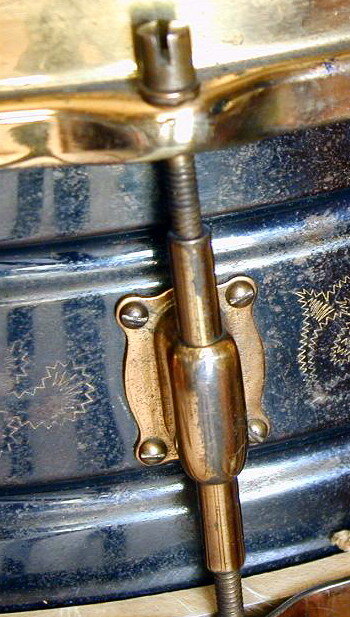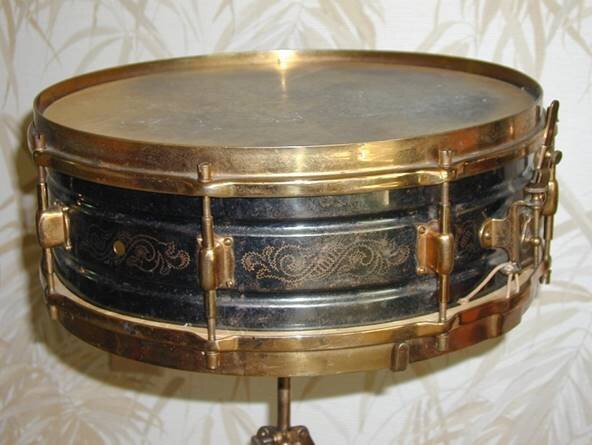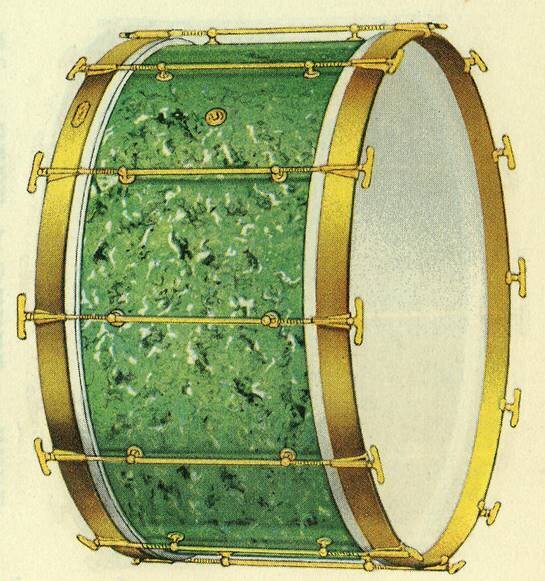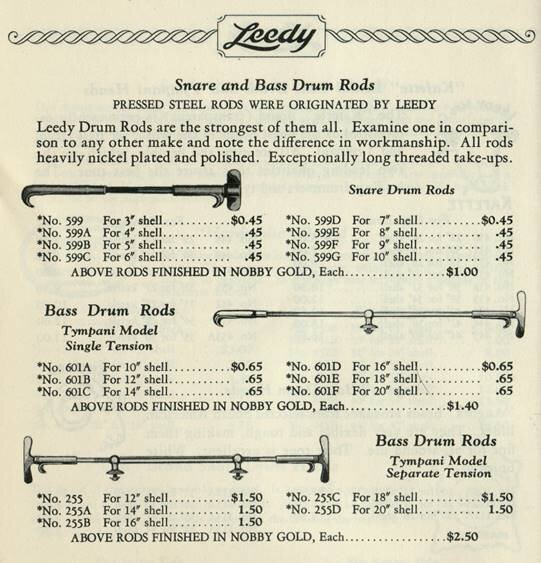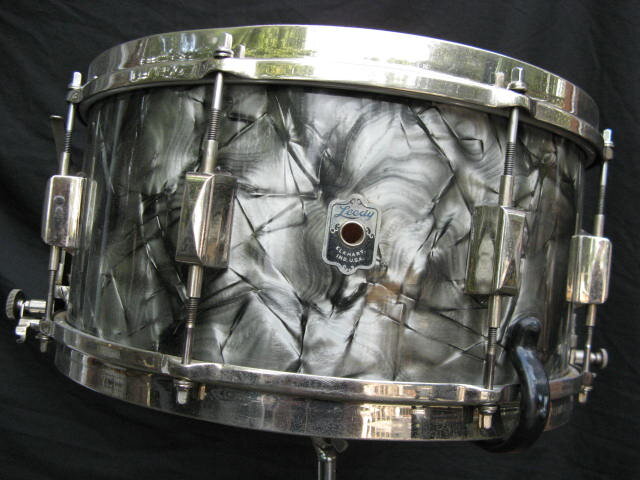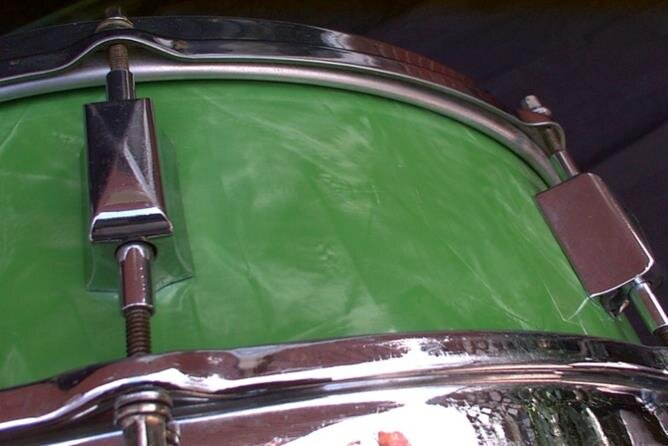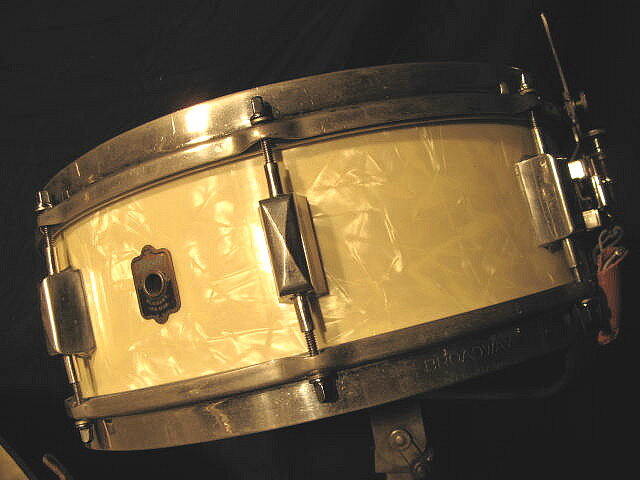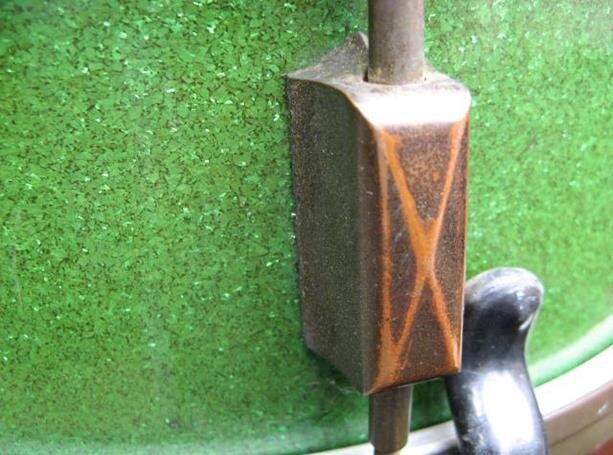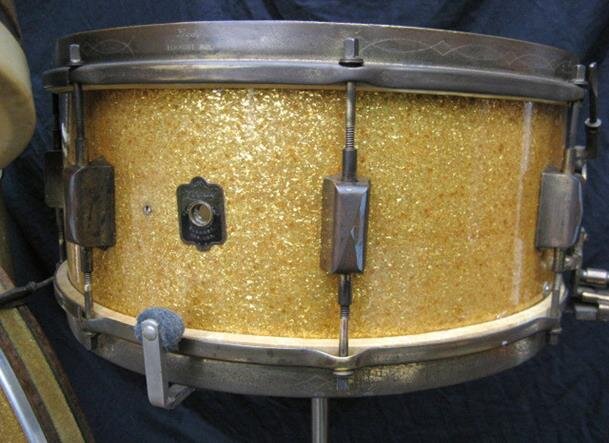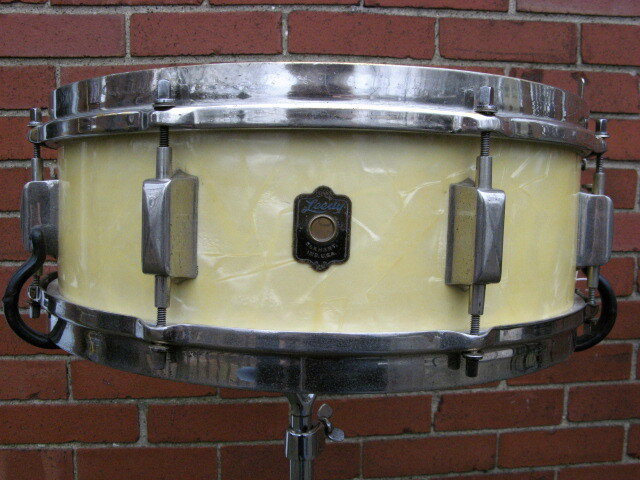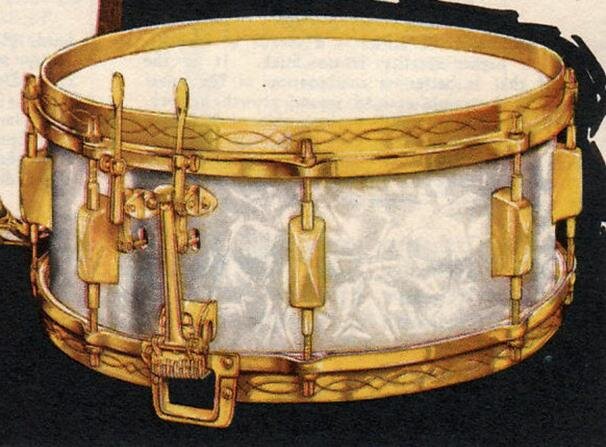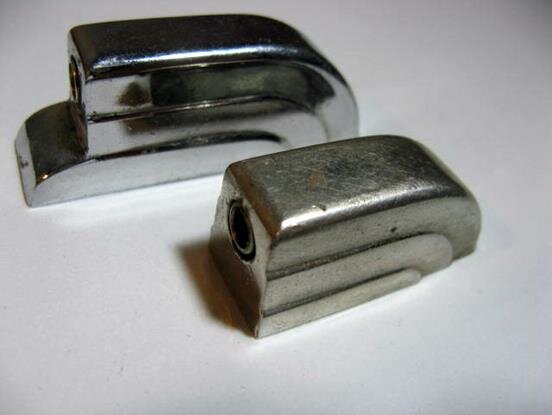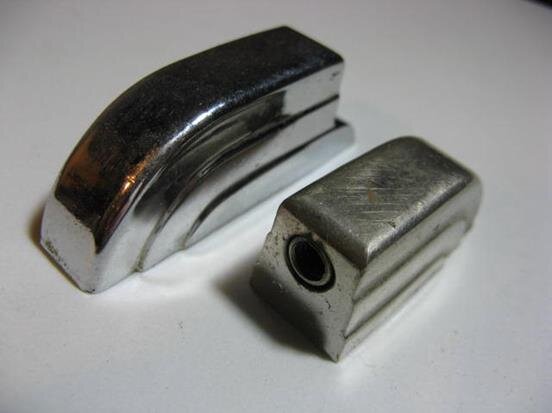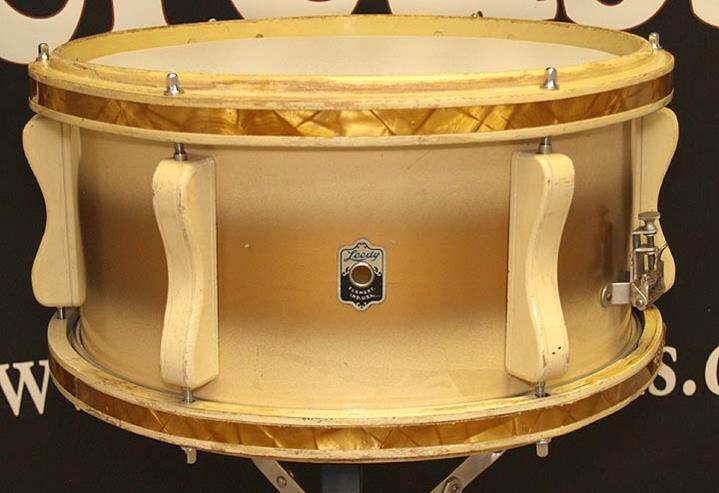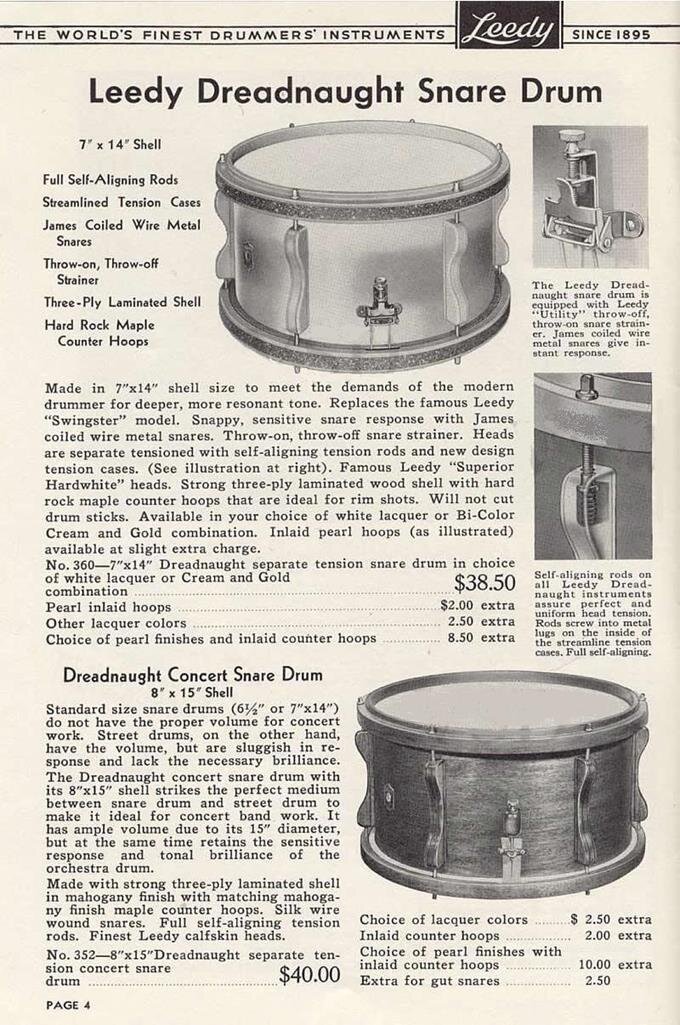(Editor’s note: This is the first of many articles about vintage drum identification and drum companies by Mark Cooper, well known expert in the field. This will be an ongoing project, a work in progress, to transfer Mark’s wealth of info and images from his website. We are adding text first, then images as time allows. There is a list of all the installments to be added at the bottom of this article. You can see all of Mark’s content at this website www.coopersvintagedrums.com)
Prior to 1923, most drum companies (Ludwig & Ludwig, Leedy and Slingerland) used “tube” lugs on their snare drums and bass drums. These lugs all looked pretty much the same, making it difficult to differentiate one company’s drum from that of another at first glance.
Around 1923, the Leedy Drum Company changed that with the introduction of the first non-tubular design. This new design was an important one in that it solved the problem of thread damage by the inclusion of a swivel insert. This allowed some free movement of the threaded insert eliminating the tendency to strip. This photo shows the first version of this lug.
Around 1925, it was modified with the addition of two more mounting screws. These lugs were used on snare drums only.
Photos by Dave Zima
A very simple lug was used for a while on early Leedy tom toms. Here is a photo of a tom lug from around 1930.
Pictured here is a Leedy bass drum with long tubular lugs. Note the bass drum tension rods and claws.
In 1929, the Leedy Drum Company was sold to the C.G. Conn Company and a true innovation in lug design was introduced that year. Known as the “X” lug or “Box” lug, this new tension casing was attached to the drum shell from inside the drum with two screws. Here is an example of an early 1930’s Leedy lug made of cast aluminum. There were at least two or more versions of this lug that I know of and they varied in size and design. The earlier versions had small screws that held the inserts in place. Eventually, an internal copper spring was added in order to allow even more flexibility and eliminated the need for these screws.
1929 - 1933
1934 - 1938
1930’s Leedy snare drum with “X” lugs
1929 First generation Leedy lug (Note the small set screws)
The first version of the Leedy “springless” lug was slightly longer than later versions. Below is a photo of the “X” lug with the addition of the internal spring from 1934. Note the lack of screws.
A few more examples of Leedy X lugs
The Leedy “X” lug was used on all top of the line snare drums from 1929 until 1938. The following year, the so called “beaver tail” lug was introduced. This was a solid metal lug and was offered in two sizes. The smaller version was used on snare drums and small tom toms, while the larger lug was used for bass drums and larger diameter tom toms. A backing plate was often used with the small beaver tail lugs. A special lug was used for single tension bass drums. It had a “half moon” or half circle shape and allowed a long rod to pass through (not pictured). Beaver tail lugs were used from 1939 until about 1969*. For more on the Leedy drums of the 1960’s please see the Slingerland History section of this web site.
1940’s Leedy beaver tail lugs and backing plate
Here is an example of the tension rod and claw that was used with beaver tail bass drum lugs:
In 1941, World War Two broke out and drum production was drastically reduced. Because of U.S. Government restrictions on metal usage, all drum companies offered their own special drums composed of 90% wooden parts.
World War Two era Leedy “Dreadnought” with wooden lugs
During WWII (probably late 1944) and immediately after, a very simple metal lug was used on certain snare drum models. This was a “skeleton” lug that used very little steel and was called the “Airline” tension casing. However, this lug was used prior to WWII as well. I have no Leedy catalog “evidence” that it was used before or during the war but these “Airline” (Ludwig & Ludwig name*) lugs were shown in the 1940 Ludwig & Ludwig catalog on single headed tom toms and timbales.
1946 LEEDY CATALOG AND “SELF ALIGNING” LUGS
*Ludwig & Ludwig timbales and tom toms featuring the Airline lug (1940-41 catalogs)
In the late 1940’s, Leedy drums were built using the same components as the pre-war drums. The beaver tail lug was still being used.
1940’s Leedy snare drum with beaver tail lugs
*In 1950, the Leedy Drum Company was merged with the Ludwig & Ludwig Company to form The Leedy & Ludwig Drum Company. With the exception of their “Knob Tension” line of drums, the Leedy & Ludwig drums that were manufactured were mainly combinations of Ludwig and Leedy shells and parts. This merged company ceased to exist in 1954 and the Leedy name was sold to the Slingerland Drum Company. The William F. Ludwig Drum Company purchased the Ludwig name. The Leedy name continued under Slingerland from 1956 until around 1969 at which time, the entire line was dropped. These drums were really just a mixture of Slingerland and Leedy drum shells and parts with the Leedy name on the badge. The new Leedy drums also featured the old Leedy beaver tail lugs. Leedy snare drums received either a late 1940’s Leedy Broadway Standard strainer, a Slingerland “three point strainer” (#967) or a Slingerland Rapid strainer, depending on the model. The snare drum center mounted lugs however, were of a distinctive design made exclusively for these Leedy snare drums. For more on Leedy & Ludwig, see the “Ludwig Lugs” and “Ludwig Strainers” sections.
Slingerland-owned Leedy beaver tail bass drum lug circa 1964
1960’s Leedy Shelly Mann model featuring unique center lugs.






